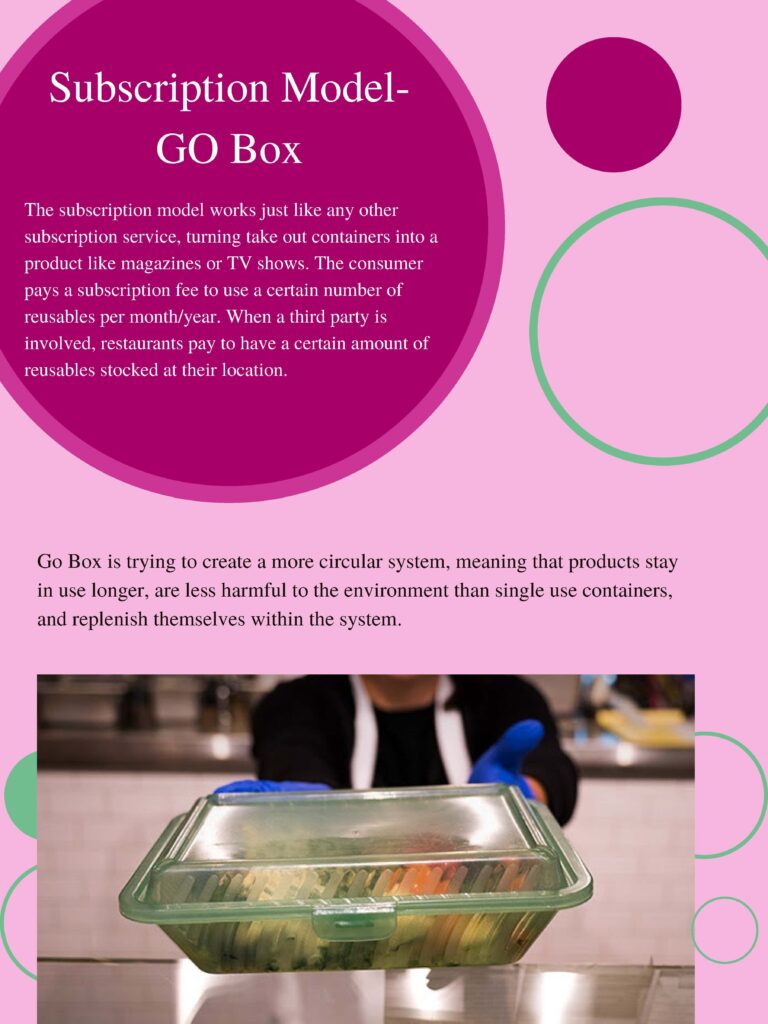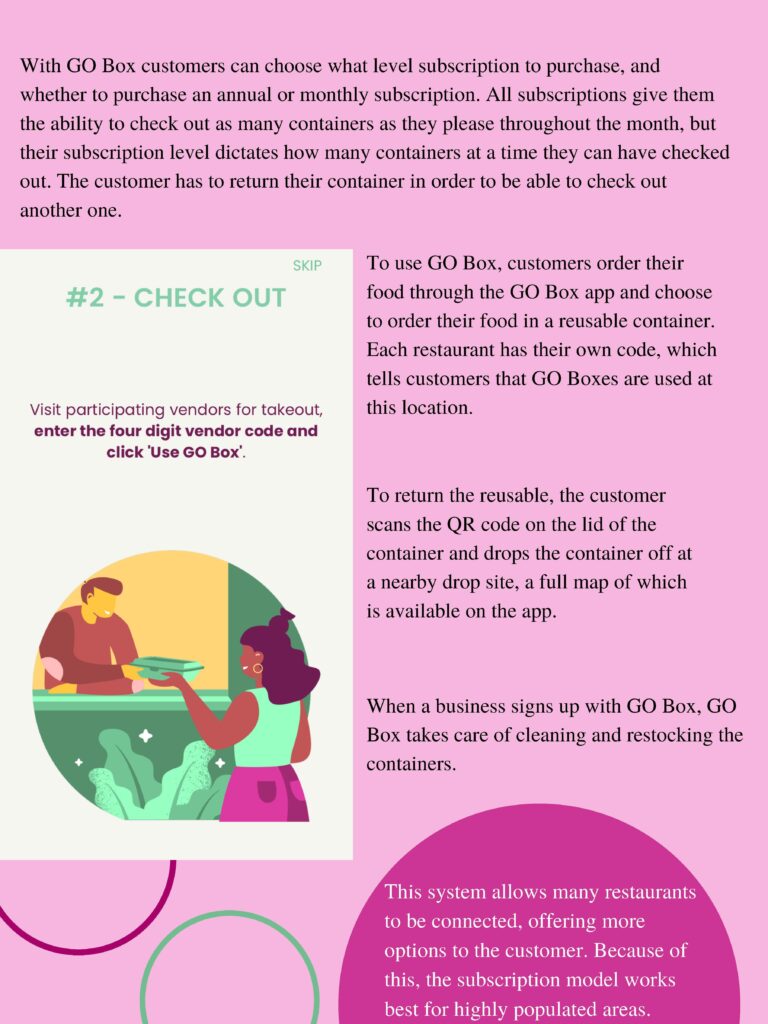Reusable Packaging Models and Case Studies
This page outlines the 4 most common reusable packaging models that are used in U.S. based restaurants. Below each model description is a case study that exemplifies how that model works in practice. To skip to a specific model, click on the name below:
Lending Models
Lending models are typically run by third-party business and operate almost like a library. In this system, customers can borrow packaging for free, but must return it within a set time frame. After a grace period that lasts up to a week, the customer is charged a late fee each day until the package is returned at a drop off location or the replacement value of the container is recuperated through the fees. Below is a summary of our case study on Useful, a Boston-based reuse system that employs the lending model.
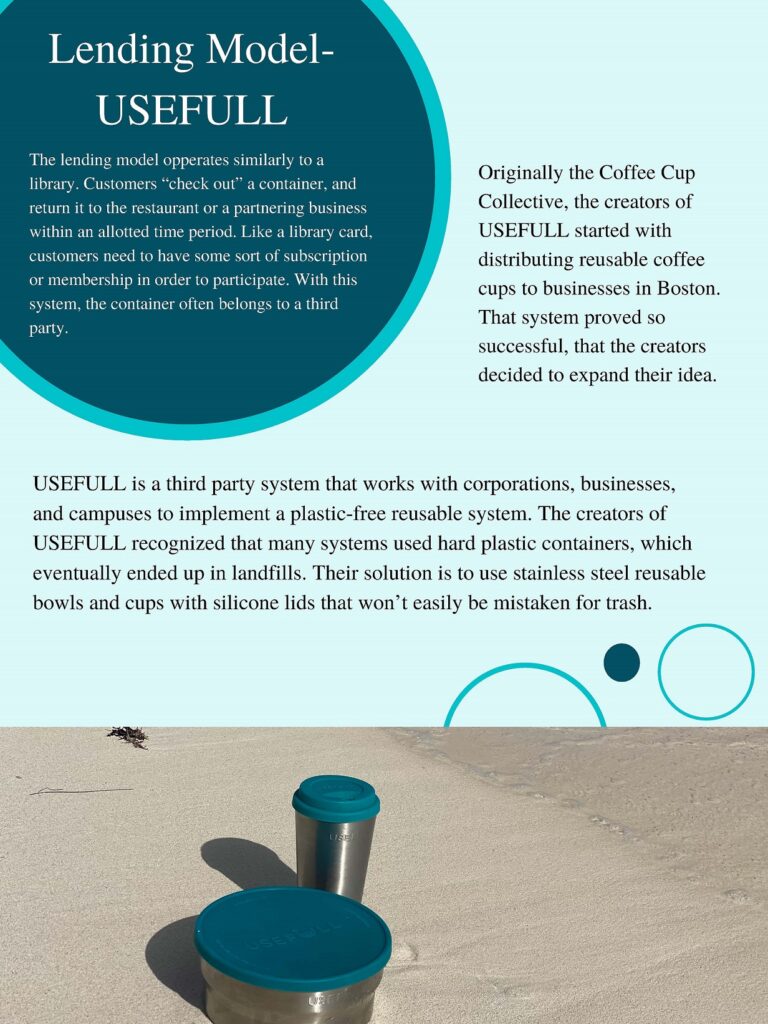
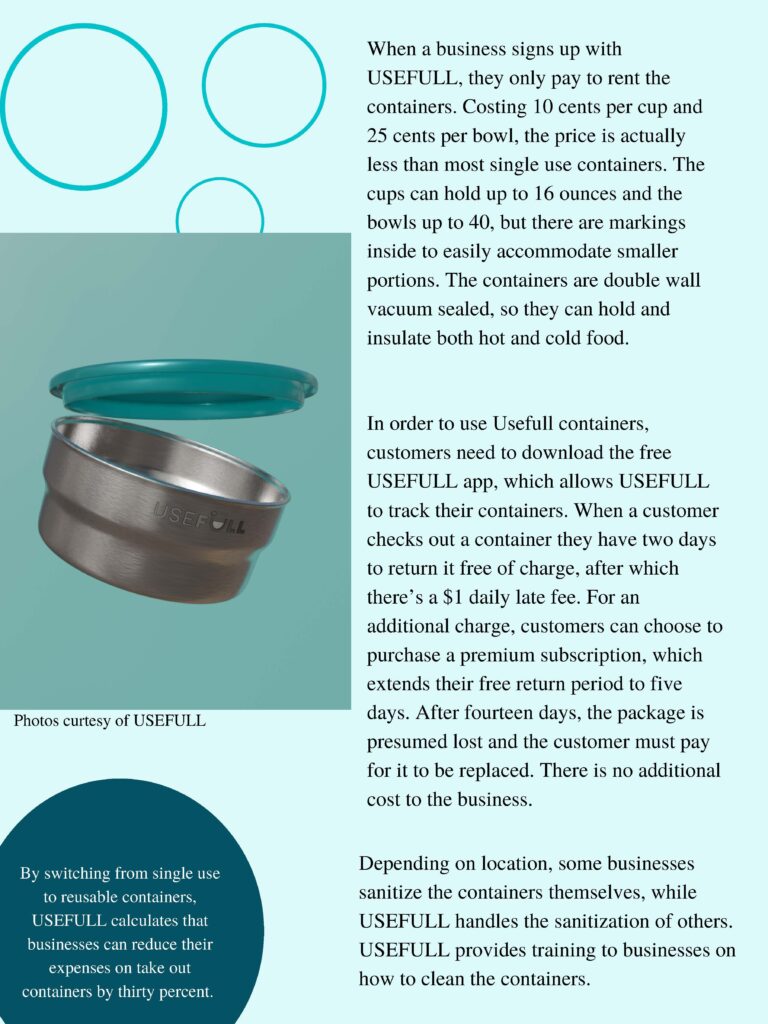
Deposit Models
This model operates like the deposit systems on milk bottles or beer growlers. A deposit is added to a customer’s initial purchase, usually enough to cover the replacement cost of the packaging (anywhere between 5 cents and 5 dollars). When a customer returns, they may either return the dirty package to receive their deposit back or to receive a clean package with their order. Below is a case study of Freiburg Cup, a city-wide reusable packaging system that is one of the reasons that Freiburg has been named Germany’s Greenest City.
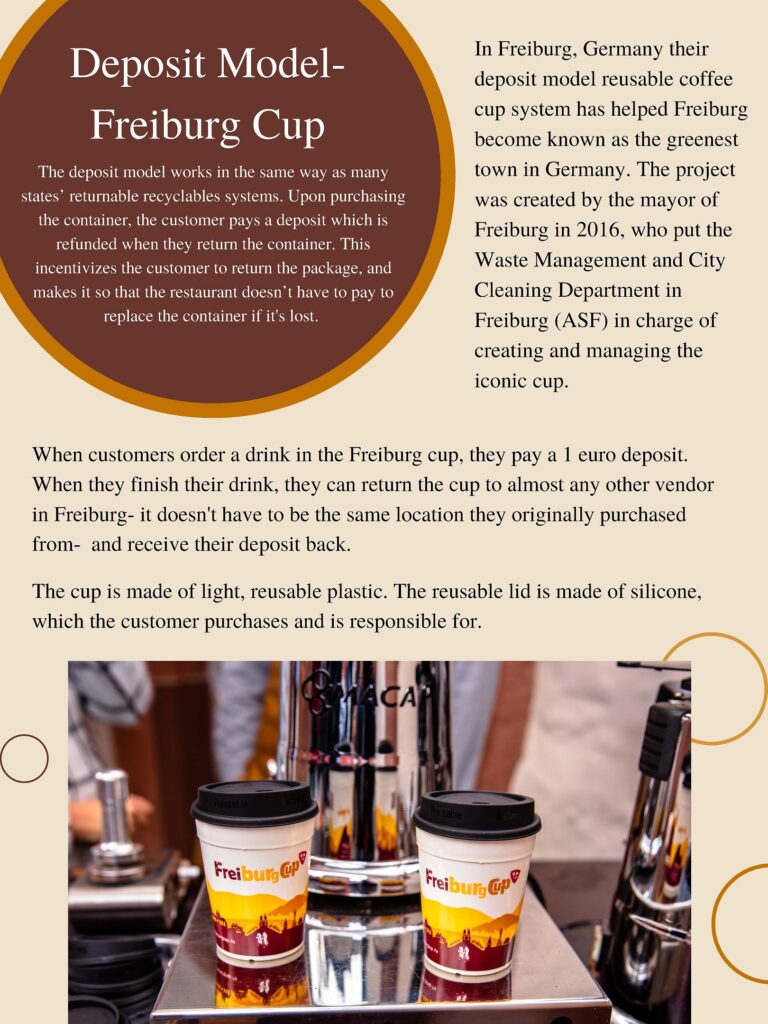
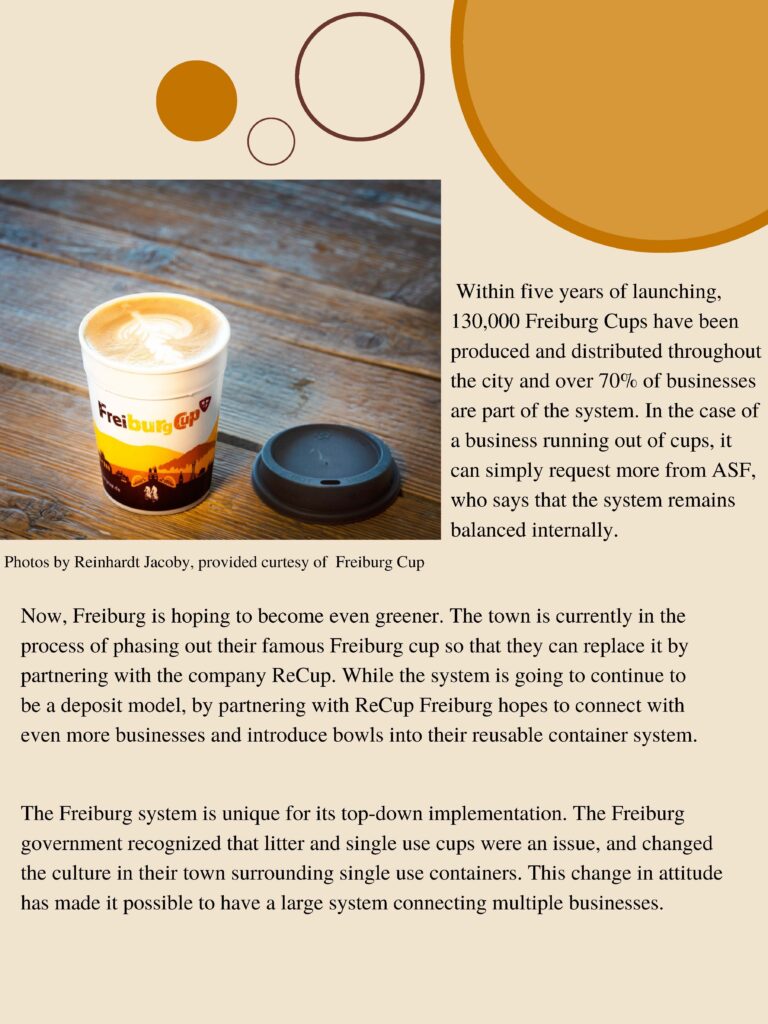
Purchase and Discount Model
Purchase and discount models work similarly to deposit systems with the exception that, once purchased, the container cannot be returned for cash. Instead, once a customer purchases a container, which cost between 5 cents and 5 dollars, they may only swap the dirty container for clean containers at each subsequent visit. When a customer swaps packaging, they receive a small discount, which is usually the price of a comparable disposable container, usually about 25 cents. These models are sometimes accompanied by upcharges for food served in disposable containers. The University of Maine Dining services uses this system and is one of the first organizations allowed to serve food in reusable packaging since the Health Inspection Program changed its policy to allow for such packaging. See the case study below for more details.
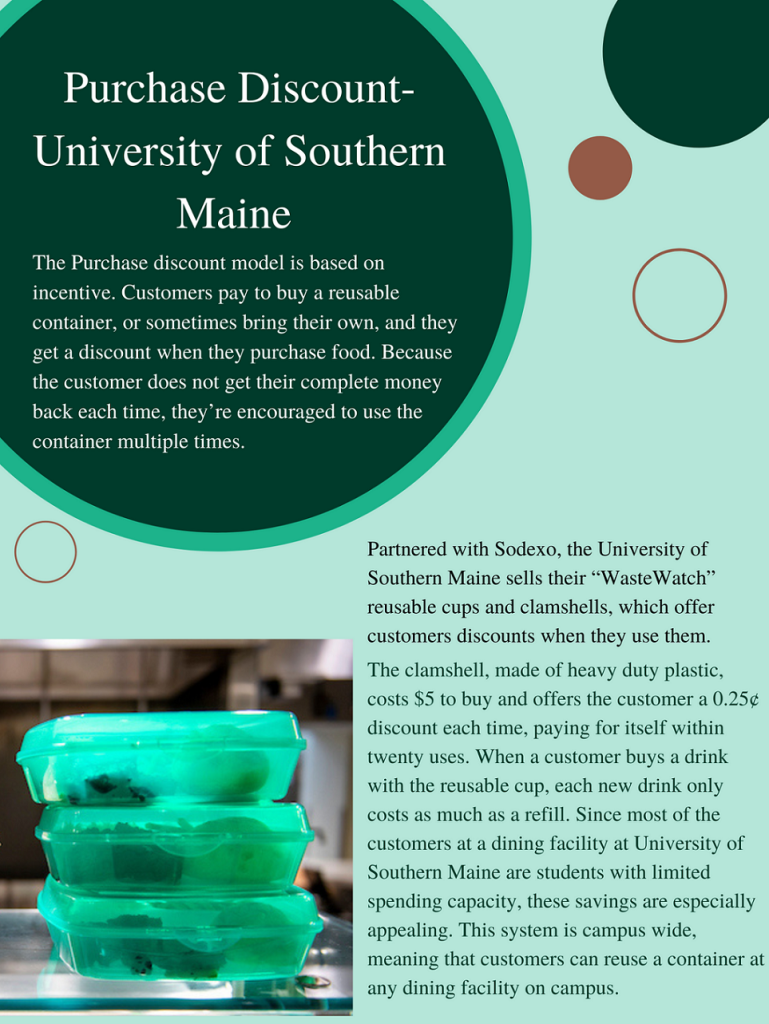
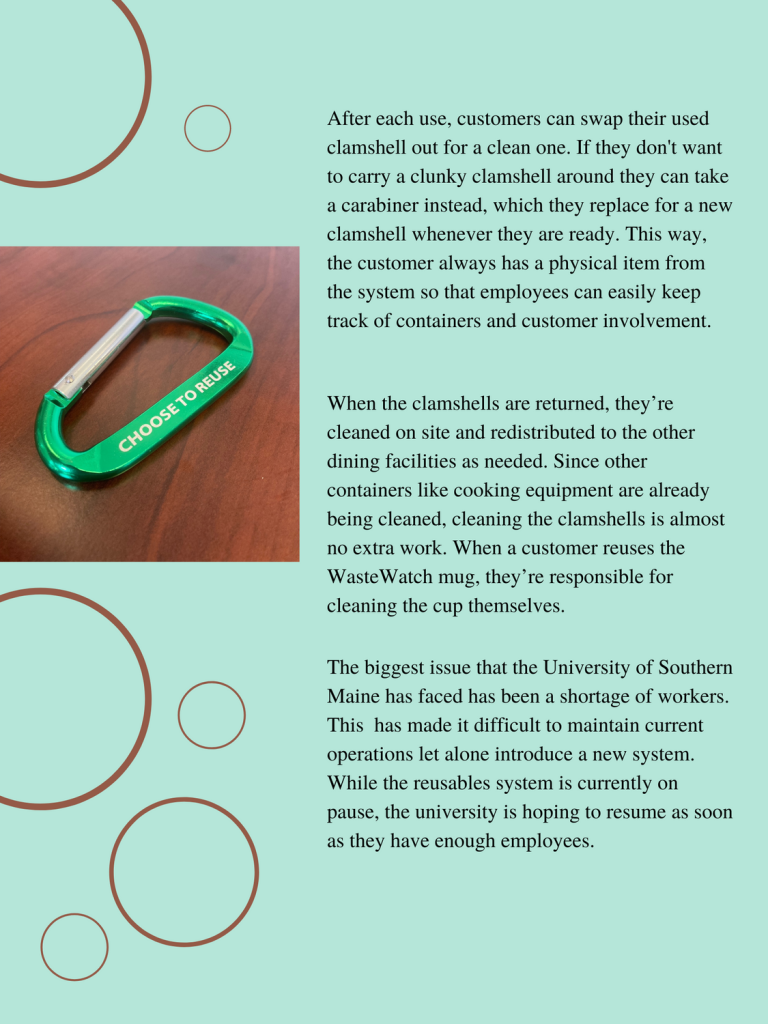
Subscription Model
In a subscription model, the customer signs up to use packaging through a third-party service. The third-party usually offers different tiers of subscription allowing the user to have a specified number of packages. Customers return the packaging at drop-off locations in order to receive a clean container with their next purchase. Customers may reset their account balance by paying for any lost packaging. Below is a case study of Go Box, a Portland, OR based reusable packaging service provider.
